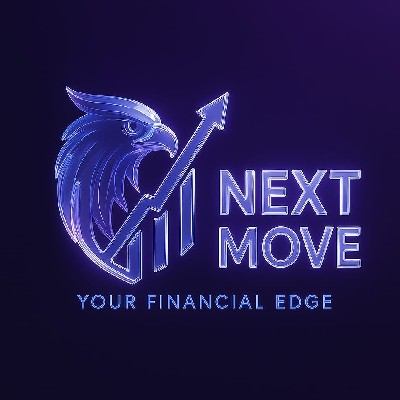Analyzing the competition for Initia in the interwoven rollup space.
Analyzing the competition for Initia in the "interwoven rollup" space requires understanding that this specific terminology is largely coined by Initia to describe its unique architecture. Therefore, direct competitors using the exact same term might be limited. However, we can analyze projects with overlapping goals and similar architectural approaches in the broader multichain and modular blockchain landscape:
1. Projects Focusing on App-Specific Chains/Rollups with Interoperability:
* Cosmos (ATOM): Initia is built using the Cosmos SDK, placing it within the Cosmos ecosystem. Cosmos focuses on an "Internet of Blockchains" where independent blockchains (zones) can interoperate via IBC. While not "interwoven rollups" in Initia's sense, Cosmos shares the vision of a connected multichain world. However, Cosmos chains are sovereign L1s, requiring their own security, whereas Initia's rollups share security from the L1.
* Polkadot (DOT): Polkadot aims to connect different blockchains (parachains) to its central relay chain, providing shared security and interoperability. While achieving a similar goal of cross-chain communication, Polkadot's architecture and security model differ from Initia's L1/L2 structure.
* Avalanche Subnets (AVAX): Avalanche allows the creation of application-specific subnets, which are independent blockchains. While customizable, these subnets don't inherently share the same level of tight integration and shared infrastructure that Initia envisions for its interwoven rollups.
* Movement (MOVE): Movement focuses on Move-based appchains with a "Move-as-a-Service" model. While also aiming for application-specific chains, their technology stack and level of L1 integration differ from Initia's multi-VM approach on interconnected rollups.
2. Layer 2 Scaling Solutions with Interoperability Focus:
* LayerZero (ZRO): LayerZero is an omnichain interoperability protocol that facilitates messaging between various blockchains. While Initia integrates LayerZero for broader connectivity, Initia's core "interwoven rollup" concept is about a more native and tightly coupled L1/L2 relationship for scalability and shared resources.
* Hyperlane (HYPER): Similar to LayerZero, Hyperlane focuses on permissionless interoperability across different blockchains. Again, while potentially complementary to Initia, it doesn't directly compete with its core architecture of interwoven rollups.
3. Modular Blockchain Projects:
* Celestia (TIA): Celestia focuses on providing a modular Data Availability (DA) layer. Initia leverages Celestia for DA, making them more complementary than competitive in the core "interwoven rollup" aspect. Initia builds its execution layer on top.
* EigenLayer: EigenLayer allows the restaking of staked ETH to secure other networks. While potentially relevant for the security of Initia's rollups in the future, it doesn't directly offer an "interwoven rollup" architecture.
Key Competitive Advantages of Initia (as highlighted by the project):
* Integrated L1+L2 Architecture: Unlike many projects offering separate L1s or L2s, Initia's core innovation lies in its tightly coupled L1 that orchestrates and supports its interwoven rollups.
* Multi-VM Support: Supporting EVM, MoveVM, and WASM on its rollups provides significant developer flexibility, unlike many L2s tied to a single VM (primarily EVM).
* Enshrined Liquidity: This novel mechanism directly integrates liquidity provision with network security, a unique approach compared to other multichain solutions.
* Native Interoperability: The design emphasizes seamless communication and asset transfer between its rollups from the outset.
Conclusion:
Initia's "interwoven rollup" approach appears to be a distinct architectural choice in the multichain space. While it shares the overarching goal of a more connected blockchain ecosystem with projects like Cosmos, Polkadot, and Avalanche, its specific L1/L2 integration and features like enshrined liquidity and multi-VM support differentiate it. The competition lies more in attracting developers and users to its specific model compared to the established ecosystems and different scaling/interoperability solutions offered by these other projects. The success of Initia will depend on the advantages its interwoven architecture provides in terms of developer experience, user experience, and n
etwork efficiency.
$INIT

Mind Over Market, Crush Trading Fears with Mark Douglas’ Secrets
Hello NEXT MOVE crew! Ready to level up your trading game and stop sabotaging your own profits?
Let’s unpack the genius of Mark Douglas’ Trading in the Zone, a psychology playbook that’s a must-read for traders who want to win big. I will tell you all the important points. I feel from reading it.
Douglas, a trader who tanked early in his career, didn’t quit, he got obsessed with why traders crash and burn, not from bad strategies, but from their own heads. His insights are gold, and I’m breaking down the juiciest bits to help you trade like a pro.
Most traders hunt for the perfect strategy, and yeah, that’s key, but Douglas says your mindset is the real dealbreaker. Even killer systems flop if you let emotions hijack your trades, crumble under losses, obsess over being right, or lack discipline.
He calls trading 80% psychology, 20% mechanics, I’d argue it’s not that lopsided, but mental game’s huge.
Blow it, and your strategy’s toast.
His five trading truths are your foundation, anything can happen, even top setups lose, you don’t need to predict the market to profit, wins and losses are random even with an edge, every trade’s unique.
These truths shift your brain from “I gotta be right” to thinking in probabilities, no panic-selling, no chasing losses, just steady consistency.
Focus on the process, not the outcome, you control your strategy and mindset, not the market’s dice roll.
Risk management’s your shield, only bet what you’re cool losing, if a loss stings like hell, your position’s too big.
Accept the risk before you trade, set that stop-loss, and know the market’s neutral, not out to get you.
Take full responsibility, no blaming the market or “rigged” systems, own your trades.
Douglas’ seven principles of consistency are your roadmap, know your edge, what’s your strategy’s win rate, technicals, fundamentals, whatever, nail it down. Define your risk per trade, accept it fully, act on your edge without second-guessing, even after a losing streak.
Take profits when the market offers, watch for emotional slip-ups, write them down to learn, and stick to your rules like glue, no expecting instant wins. These habits build discipline, and discipline breeds profits.
For crypto traders, this is clutch, $BTC s wild swings or altcoin pumps can mess with your head, but Douglas’ rules keep you grounded.
My move? Pair a solid edge, like on-chain data or chart setups, with iron-clad risk management, and short altcoins when the market’s shaky, they drop faster than $BTC . Stay calm, stack gains over time. Wanna crush it like this?
What’s your biggest trading mind-trap? Spill it in the comments, let’s get the NEXT MOVE crew mentally unstoppable and Thanks for the massive support given me so far. We become 500 memeber family now. If you loving my content Smash that Follow Button Right now !
$BTC $ETH $XRP $SOL $ADA $LINK $AVAX $DOGE
Mantra DAO’s 90% Crash, Futures Madness, and the Shorting....
Hello NEXT MOVE crew, Mantra DAO’s OM token just got obliterated, plunging 90% from a $5B market cap to $500M, and it’s still bleeding at $0.51, so what’s the deal, and can this carnage hit other top cryptos?
Let’s rip into the data most miss and uncover how to profit in this brutal market. Mantra, once a top-100 player, got crushed by a liquidation cascade, sketchy over-the-counter (OTC) deals, and a perpetual futures frenzy, not retail panic or fundamentals.
The CEO’s Coffeezilla interview spilled tea, insiders sold discounted tokens via OTC deals, bypassing official vesting, flooding the market and tanking the price.
The official supply crept from 932M to a bit higher, but that’s not the crash driver, perpetual futures are. Open interest data shows a surge in short bets post-crash, with shorts paying 0.44% every 8 hours to longs at $0.62, sparking a brief bounce to $0.80 as liquidations kicked in.
Now, short interest’s cooling, and the price is slipping again.
On-chain, Mantra trades on Ethereum, Binance Smart Chain, and Base, with Ethereum hosting the big liquidity, 42,000 holders and 150+ whale wallets with $100,000+. Post-crash, whales are buying back in, nearing all-time highs, while retail and mid-tier holders barely budge.
Here’s the harsh truth, Mantra’s protocol is a ghost town, $2M in total value locked at a $500M market cap, fundamentals are a joke.
It’s a futures-driven game of musical chairs, and OM’s been underperforming Bitcoin since 2014, juiced by OTC deals and leverage before the crash. Altcoins are in a rough spot, “Total 3,” non-BTC/ETH market cap, is flat over four years, while Bitcoin’s dominance climbs, far from the 70% altcoin rally trigger. Mantra’s speculative now, market makers rule, pumping when shorts pile in, dumping when bets dry up.
My play? Stay agnostic, short Mantra and similar alts post-pump, like my Trump token short after its insider-driven spike. Premium members are banking, using on-chain analytics and risk guides to dodge liquidations.
Don’t hold and pray, bet on dumps when the futures crowd overplays. Got a token you’re watching or a short in mind? Spill it below, let’s keep the NEXT MOVE crew racking up wins! #MantraCrash #AltcoinShorts #TradeTheDump
$BTC $ETH $XRP $SOL $ADA $AVAX



 最低價
最低價 最高價
最高價 









































Avalanche社群媒體數據
過去 24 小時,Avalanche社群媒體情緒分數是 3.1,社群媒體上對Avalanche價格走勢偏向 看漲。Avalanche社群媒體得分是 439,727,在所有加密貨幣中排名第 48。
根據 LunarCrush 統計,過去 24 小時,社群媒體共提及加密貨幣 1,058,120 次,其中Avalanche被提及次數佔比 0.22%,在所有加密貨幣中排名第 28。
過去 24 小時,共有 8,022 個獨立用戶談論了Avalanche,總共提及Avalanche 2,342 次,然而,與前一天相比,獨立用戶數 增加 了 4%,總提及次數減少。
Twitter 上,過去 24 小時共有 61 篇推文提及Avalanche,其中 7% 看漲Avalanche,3% 篇推文看跌Avalanche,而 90% 則對Avalanche保持中立。
在 Reddit 上,最近 24 小時共有 161 篇貼文提到了Avalanche,相比之前 24 小時總提及次數 增加 了 18%。
社群媒體資訊概況
3.1